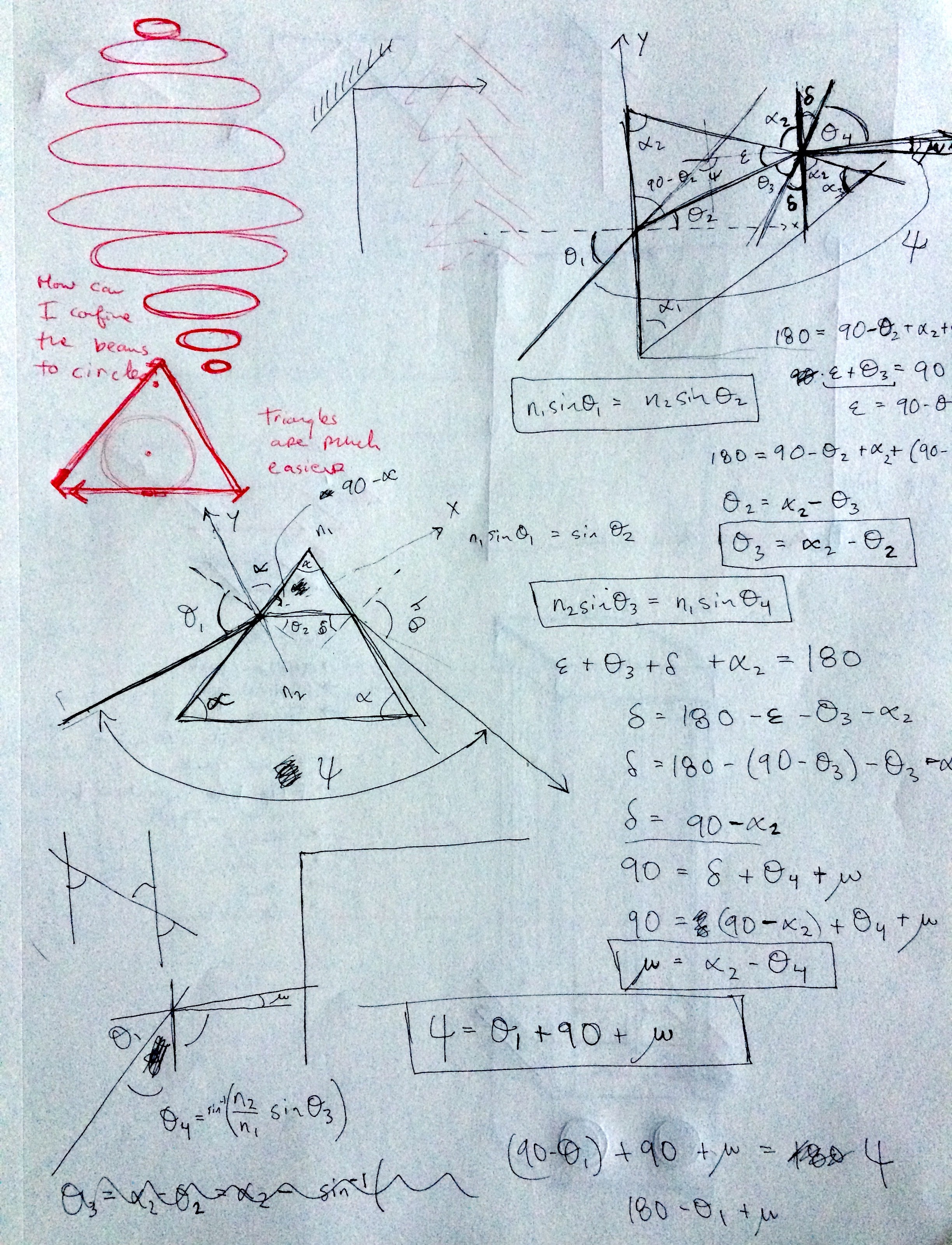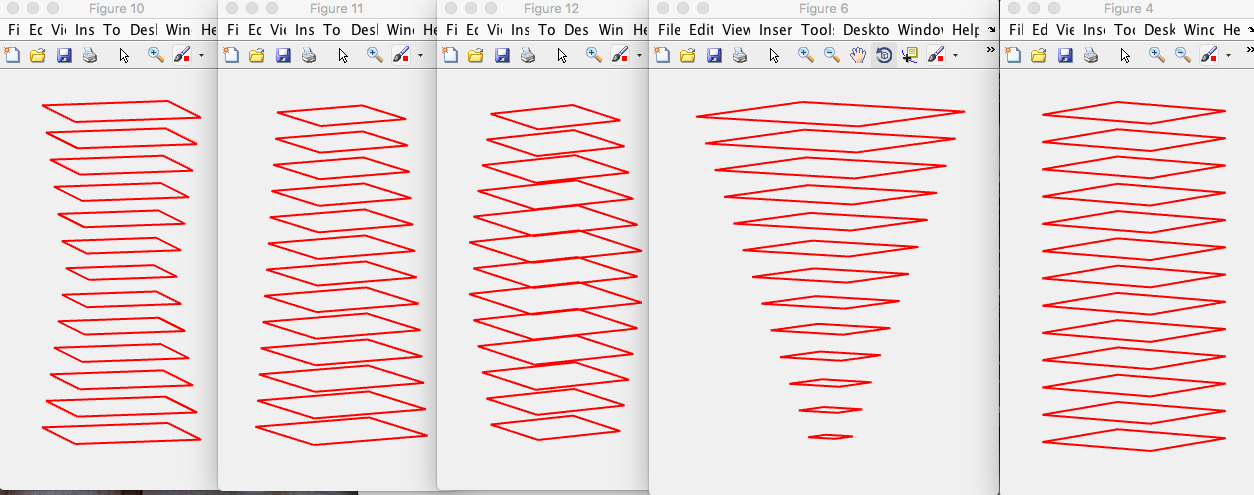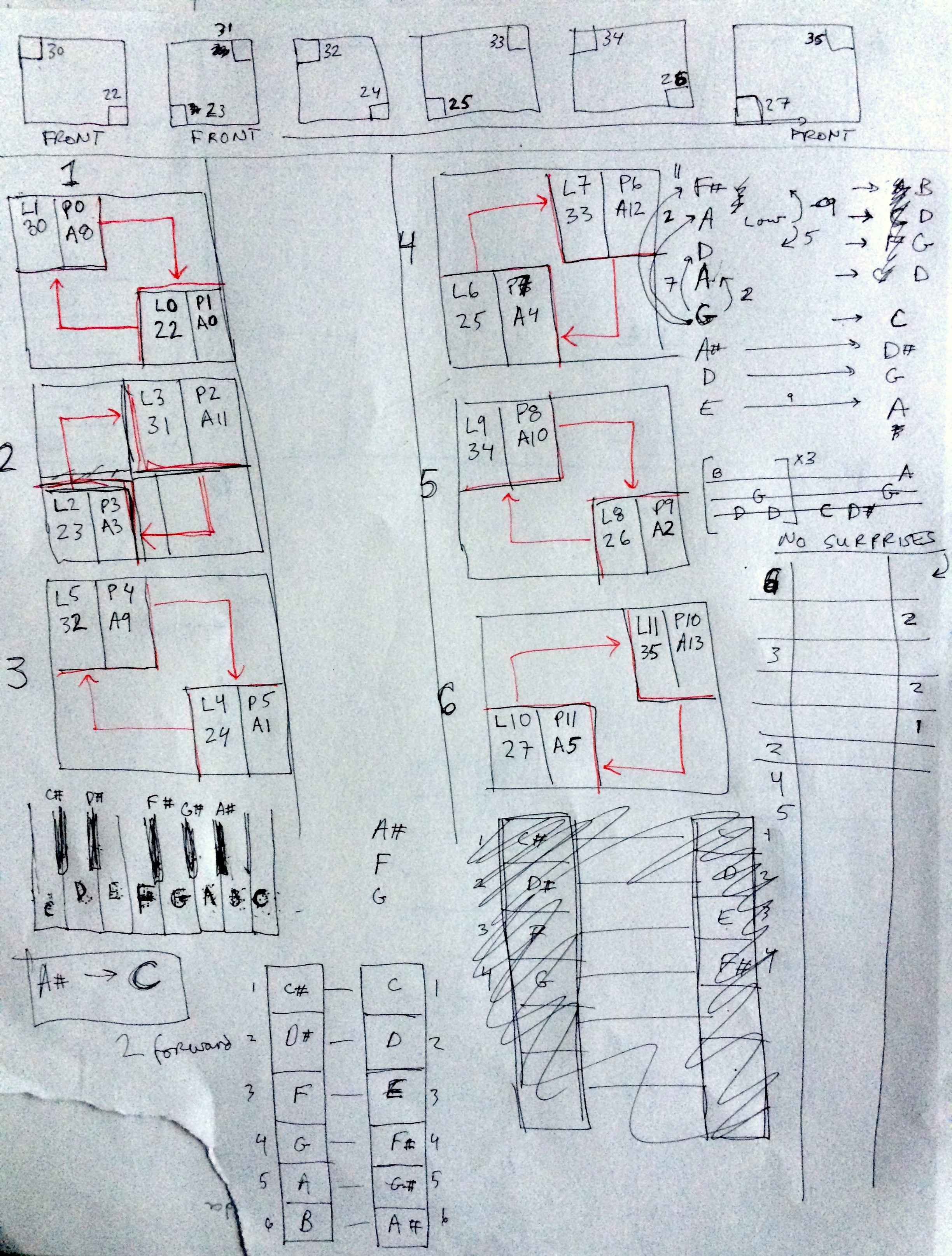After completing the first prototype, I turned back to my original handwritten project plans. Looking back on these plans is also helping me with the next steps in the project. In this project log, I wanted to go over a few design decisions I made early on in the project and how they affected the system development.
1. Laser beam trajectory
I knew from the beginning that I wanted the lasers to propagate horizontally in a closed loop, but I wasn't sure how to shape the closed laser loop. I originally thought the laser beam wrapping into a circle would be best. This idea was inspired by the laser vortex projects and my laser sheet generator musical instrument. However, I soon realized it is difficult to wrap a laser beam into a circle. The closest solution I could find was using many prisms, but it would be expensive and difficult for the user to break the beam because all the prisms are in the way. In the photocopied page you can see my plans for circular laser trajectories and math to figure out how to achieve them with prisms.

I eventually settled on making square trajectories because they were so much easier to construct. Initially I thought this was a setback in the development, but later thought square trajectories would look great and make the most sense to play.
2. Tower height and layer spacing
In my first sketches, I imagined the upright laser harp being really tall with one laser on each layer. From the drawing, it looks like I always knew there would be two small speakers on the front of the device.

After getting some feedback from my wife, I switched to a shorter design with two lasers per row. I liked the compact look more and I started to realize that a major advantage of this design in general is a smaller system that is easy to carry around.
I also took some time modeling the stacked laser trajectories using Matlab. I needed to decide if the trajectories would change in the vertical direction.

Here you can see a few ideas I had. I liked the symmetry and simplicity of the constant trajectory size in the drawing to the right of the figure. This design would also be easier to construct and test the idea.
3. How to redirect the beams
At the beginning of the project, I really wanted to redirect the light using prisms so that the laser beam would be visible throughout the entire trajectory. If I used mirrors, I worried that they would block the view of the beam path. After doing some math, I realized that a 90deg turn by refracting light through a prism would not be possible. However, prisms can redirect light in a 90deg turn through total internal reflection. I made an order for Hemicircle shaped plastic, which also can redirect the beam 90deg. I was disappointed how much of the laser light was still transmitted (so much for total internal reflection!). The losses were too much and the alignment was a nightmare. I decided to just go with small mirrors, which were cheaper and easier to work with.

To make up for this short coming, I made the device as "see-through" as possible so that it was easy to see as much of the beams as possible.

One last sketch here showing some of the planning for how to layout the lasers and how the beams should be tuned.
 Jonathan Bumstead
Jonathan Bumstead
Discussions
Become a Hackaday.io Member
Create an account to leave a comment. Already have an account? Log In.